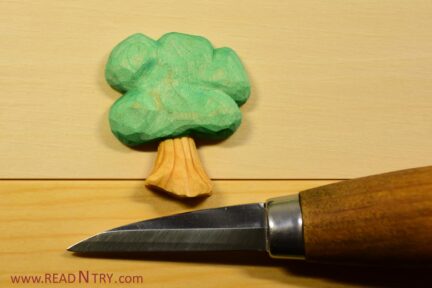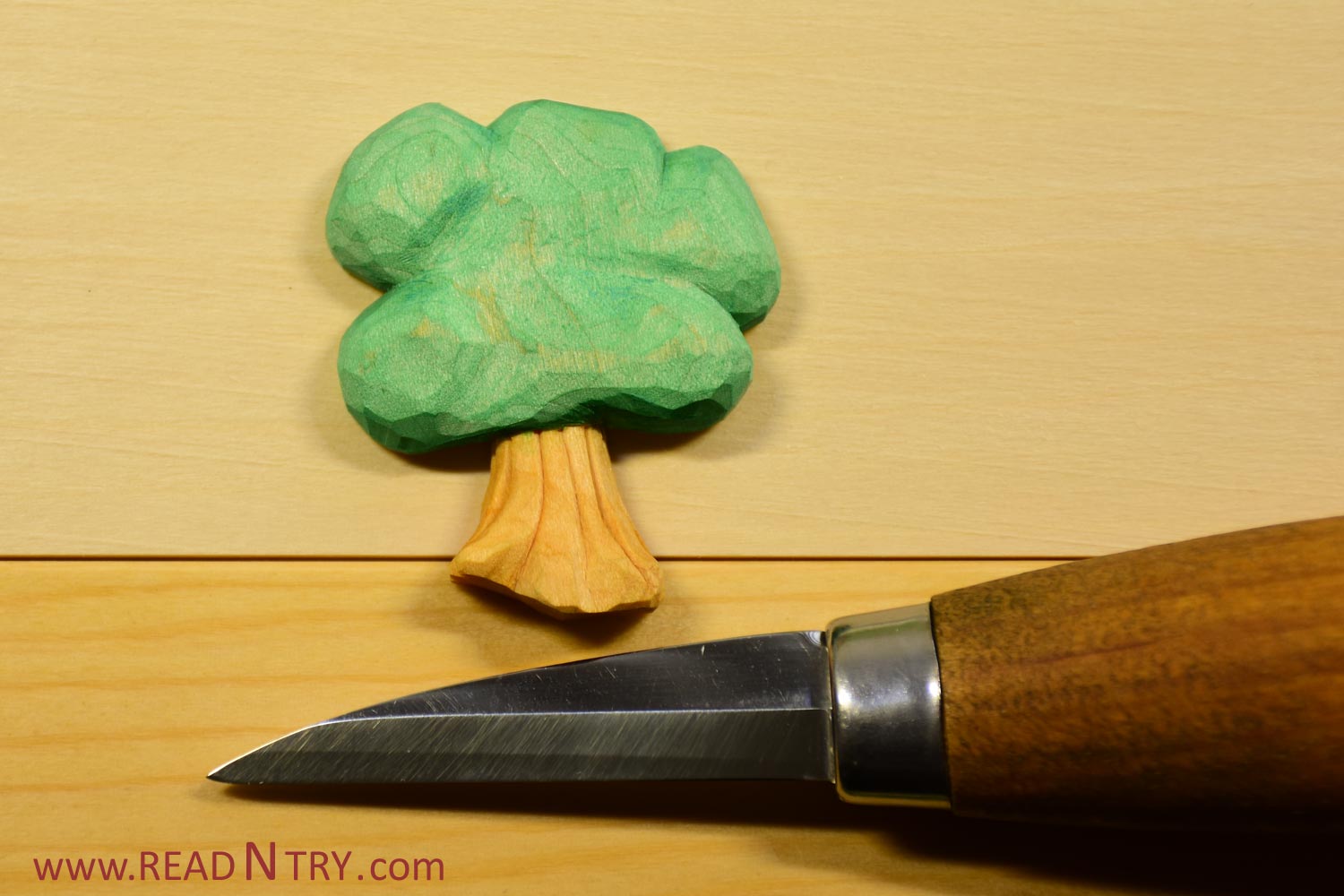Wood is beautiful, natural resource. Trimmed branches or dying trees can get a new life if carved. Any wood can be carved but some wood may be more suitable for carving. Let me share my thoughts on the best wood to carve question.
All wood starts as “green” wood. Green wood means that the wood was recently harvested from a living tree and it didn’t dry yet. Natural, high moisture content in green wood makes it easier to carve. If you carve green wood keep in mind that your completed project may warp or crack a little over time while the wood is still drying.
I carve and whittle basswood that is kiln-dried. It is available at stores and online.

Basswood is a very soft hard wood; sorry for the pun but it is true! Hard wood is wood from the trees that have leaves and blossom flowers opposite to conifer trees that have needles and cones and are considered soft wood. Pine and Christmas trees are soft wood; it is easy to carve but it does not hold small carving details well; and it is OK for some larger projects. Hard woods such as maple, cherry, oak can be carved but they may be too hard for carving and may dull a whittling knife fast. Basswood is one of the softest woods in the hard wood family of trees; it is very easy to carve and it holds the details well.
The tree on the picture above is carved from basswood, it is painted but still needs some finish; the size is about 2 x 2″ (5 x 5 cm). The tree is placed on two basswood boards; the top board is as is and the bottom one is oiled — see the difference of how oil make the grain visible. You may learn about the knife I use in my next post about whittling.
Back to basswood. I was confused a little with the name of the wood that I like to carve. In the different parts of our planet people call it basswood or simply bass, linden and lime. Three names for one thing in the same language! Some people refer to basswood as white-wood. You may read more details on Wikipedia about basswood or Tilia that describes a family of similar trees.
The Russian name for basswood is leepa (липа). Interesting, the leepa word became an unofficial synonym for the word “fake” in Russia hundreds of years ago. The reason is that basswood was the best available material to fake stamps – it is easy to carve; it holds small details well and it is easily available.
The basswood wood comes from trees that have very recognizable seeds. Tea brewed from basswood seeds and flowers is nice and is believed to be good for health. When I was a kid I remember one fun afternoon as a family activity — we were picking basswood flowers so we could enjoy basswood tea during winter months. Basswood honey is also very delicious.
Trees that grew in northern areas have less space between the year rings. These trees grow slower due to the cold climate, so they form tighter grain – that holds small carving details better. So pick your carving wood from north if you carve in the Northern Hemisphere of Earth.
Other types of wood are also poplar… ah, popular: poplar, balsa, jelutong, pine, etc. Certain woods are rare or more expensive. For example boxwood (or box) holds very small details extremely well due to its extremely tight grain. Search online for pictures of “boxwood nut” – I am sure, you will be amazed.
Overall, any wood is fun to carve if you keep your knife (and other tools) sharp. What is the best wood to carve for me? Definitely basswood! Just be safe; consider using a thumb-guard and a cut resistant glove and always look for where the blade is going – wood can split and the blade will go that direction fast – human fingers are inefficient blade stoppers 🙂 Be safe while carving any type of wood!


Leave a Reply